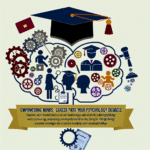
Empathy as a Cornerstone: How It Shapes Our Interactions and Relationships for Meaningful Connections
Introduction
In our increasingly complex world, the ability to connect with others is more vital than ever. Imagine walking into a room filled with people, feeling an instant sense of connection or disconnection. What makes the difference? At the heart of that experience lies empathy—a profound and often overlooked cornerstone of human interaction. In this exploration of "Empathy as a Cornerstone: How It Shapes Our Interactions and Relationships," we will delve deep into how empathy not only enriches our lives but also transforms our relationships and interactions.
This article aims to equip you with insights that could enhance how you communicate, work, and live alongside others. Are you ready to discover the undeniable power of empathy?
What is Empathy? A Deeper Understanding
Empathy is the capacity to understand and share the feelings of another. It goes beyond mere sympathy; it’s not just about feeling sorry for someone else but about genuinely grasping their emotions and perspectives. Empathy can be classified into three types:
- Cognitive Empathy: The ability to understand another’s thoughts and feelings.
- Emotional Empathy: The ability to physically feel what another person feels.
- Compassionate Empathy: The ability that moves us to take action based on our understanding and feelings.
Understanding these dimensions is essential for delving into the concept of empathy and exploring its significant impact on our interactions and relationships.
The Role of Empathy in Relationships
Enhancing Communication
Effective communication is the backbone of any relationship, and empathy serves as its essential facilitator. When we approach conversations with an empathic mindset, we:
- Listen Actively: Instead of just hearing words, we engage with their emotions.
- Reduce Misunderstandings: By grasping the underlying feelings, we can prevent conflicts.
- Build Trust: Empathetic interactions foster an environment where individuals feel safe to express themselves.
Consider a workplace scenario where a manager practices empathy in team meetings. Rather than merely focusing on tasks, they take time to understand their team’s personal challenges. This approach not only enhances communication but also cultivates a sense of belonging among team members.
Case Study: The Empathetic Workplace
Company: Google
Overview: Through various initiatives like “Project Aristotle,” Google studied what makes teams effective. They discovered that psychological safety, fueled by empathy, was a critical factor.
Analysis: This case exemplifies how fostering empathy creates a supportive environment that encourages innovation and productivity. When employees feel heard and understood, they are more likely to contribute creatively and collaborate effectively.
Building Stronger Connections
Empathy nurtures deeper connections, allowing individuals to experience one another fully. The more we empathize, the more significant our relationships become. Empathy encourages vulnerability, and vulnerability cultivates a sense of intimacy.
Think about your closest relationships. These bonds often thrive because of shared experiences and emotional understanding. The ability to empathize helps us navigate challenges together and celebrate successes with genuine joy.
Empathy and Conflict Resolution
Conflict is an inevitable aspect of any relationship, but empathy can serve as a bridge to resolution. By understanding the other party’s perspective, we can foster constructive dialogues instead of escalating tensions.
Steps for Empathetic Conflict Resolution
- Listen Without Judgment: Prioritize understanding over reacting.
- Acknowledge Feelings: Validate the emotions at play; they are real for the other person.
- Collaborate on Solutions: Aim for a resolution that honors both perspectives.
Case Study: Empathy in Conflict Resolution
Situation: A leading tech company faced internal conflicts due to divergent views on a project.
Solution: After implementing empathy training, the managerial team facilitated discussions that allowed staff to voice concerns while empathizing with different viewpoints.
Analysis: This not only resolved the immediate conflict but also established long-term collaboration, demonstrating that empathy can significantly shape workplace dynamics.
The Science Behind Empathy
Understanding the biological underpinnings of empathy adds another layer to our exploration. Neuroscience has identified that when we perceive someone else’s pain or joy, our brain activates in parallel. This mirroring may explain why empathy is such a powerful connector in human interactions.
Table: The Neuroscience of Empathy
| Type of Empathy | Brain Regions Involved | Impact on Interaction |
|---|---|---|
| Cognitive Empathy | Prefrontal Cortex | Enhances understanding of viewpoints |
| Emotional Empathy | Anterior Insula, Anterior Cingulate Cortex | Facilitates emotional resonance |
| Compassionate Empathy | Mirror Neuron System | Motivates altruistic behavior |
Empathy as a Cornerstone in Education
Fostering Empathy in Schools
As future leaders and responsible citizens, students must develop strong empathetic capabilities. Educational institutions that prioritize empathy create inclusive atmospheres where students thrive academically and socially.
Techniques for Teaching Empathy
- Role-Playing Scenarios: Engage students in activities that encourage them to step into someone else’s shoes.
- Literature and Storytelling: Share stories that highlight diverse perspectives.
- Community Service Projects: Involve students in programs that encourage understanding and compassion towards different communities.
Case Study: Emphasis on Empathy in Education
School: The KIPP Academy
Overview: This charter school network integrates empathy into its curriculum, teaching students to appreciate and understand their classmates’ backgrounds.
Analysis: Students who learn empathy in school settings often carry these skills into adulthood, shaping the way they interact within their communities and workplaces.
The Transformative Power of Empathy in Communities
Building Resilient Communities
When empathy is embedded within communities, it has the potential to combat social issues effectively. Empathetic communities are characterized by strong social networks, reducing isolation and fostering collaboration.
Initiatives to Encourage Community Empathy
- Community Dialogues: Facilitating open discussions about local issues can bring about understanding.
- Collaborative Projects: Joint efforts in community service can create bonds amongst diverse groups.
Case Study: Empathy Initiatives in Action
Organization: The Empathy Project
Overview: This initiative focuses on connecting diverse neighborhood groups to work on shared community goals.
Analysis: Positive outcomes include increased trust, lowered crime rates, and enhanced collaborative spirit, demonstrating the immense value of empathy within community frameworks.
The Barriers to Empathetic Interactions
While empathy is crucial, several barriers can hinder our ability to connect with others:
- Cognitive Load: High stress levels can reduce our capacity for empathy.
- Prejudice and Bias: Stereotypes can cloud our judgment and inhibit empathetic connections.
- Digital Communication: The rise of digital communication can dilute the emotional exchanges that foster empathy.
Overcoming These Barriers
- Mindfulness Practices: Encourage awareness of our thoughts and feelings, creating mental space for others.
- Education on Diversity: Promote understanding through workshops and training sessions aimed at reducing biases.
- Quality of Interaction: Encourage face-to-face communication whenever possible to enhance emotional connections.
Conclusion
Empathy is not merely an emotional response; it is the foundation upon which meaningful interactions and relationships are built. From personal relationships to community ties and workforce dynamics, "Empathy as a Cornerstone: How It Shapes Our Interactions and Relationships" plays a vital role in fostering connection, understanding, and collaboration.
The next time you find yourself interacting with others, approach the situation with empathy. By embracing this cornerstone of human connection, you will not only enrich your relationships but also contribute to a more compassionate world.
Take action today: practice active listening, embrace vulnerability, and most importantly, strive to understand others’ perspectives. It’s a small shift that can lead to monumental change, both personally and globally.
FAQs about Empathy
1. What is empathy?
Empathy is the ability to understand and share the feelings of another. It involves engaging emotionally and cognitively with others’ experiences.
2. Why is empathy important in personal relationships?
Empathy fosters trust, enhances communication, and encourages deeper connections, essential for healthy and meaningful relationships.
3. How can I develop my empathy skills?
Develop your empathy by practicing active listening, engaging in role-playing exercises, and seeking to understand diverse perspectives.
4. Can empathy be learned?
Yes, empathy can be cultivated through practice, education, and intentional interactions that foster understanding and compassion.
5. What are some barriers to developing empathy?
High stress, prejudices, and digital communication can hinder empathetic interactions. Being aware of these barriers is the first step toward overcoming them.
By embracing the principles outlined in "Empathy as a Cornerstone: How It Shapes Our Interactions and Relationships," you can unlock the power of empathy and transform your personal and professional relationships for the better.

















